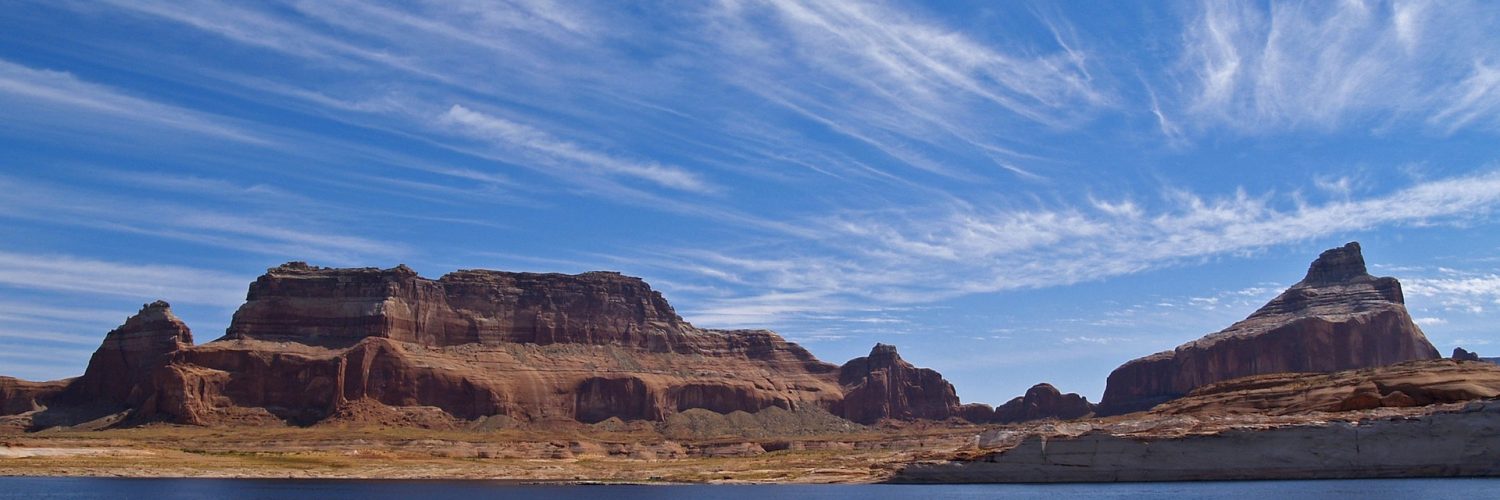Governors in seven states have until March 19 to make recommendations about how the Lower Basin states could be required to cut back on their most important water supply, the Colorado River.
With water shortages coming as soon as 2020, Arizona and California failed to meet a March 4 deadline to submit all documents for their part of a seven-state-and-Mexico drought contingency plan to the federal Bureau of Reclamation. The plan, the Upper and Lower Basin Drought Contingency Plan (DCP), kicks in with cuts to water supplies when a shortage strikes to protect water stores in Lake Powell and Lake Mead.
Now, the Bureau is seeking input from March 4 to 19 on the Federal Register for direction from states on the DCP to protect Lake Mead that serves the three Lower Basin states, Arizona, California and Nevada.
“In the circumstance that the DCPs cannot be promptly completed in early 2019, the Department must be prepared to take actions – if needed – to respond to the increasing risks facing the Colorado River Basin,” the Federal Register notice states.
If Arizona and California submit all documents by March 19, the recommendations will be dismissed.
Arizona is currently working toward meeting the deadline. So the Bureau will not have to step in. This is the first time in history it has had to contemplate taking over a state’s water management process.
Federal officials said they have no time to waste. The DCP must go into operation in August to help stave off the Southwest’s first water shortage that is more than 50 percent likely next year.
On Monday, the Bureau made an encouraging announcement regarding California’s sole issue holding up the DCP, the cleanup of the Salton Sea. The Imperial Valley Irrigation District (IID) has been holding off on completing its part of the DCP as it seeks $200 million to clean up the inland sea that is evolving into a toxic wasteland.
As a high priority water user with senior rights to the Colorado River, the IID has proven it is able to meet its obligations to the DCP, Reclamation Commissioner Brenda Burman stated.
Last year, the irrigation district signed an agreement with the Metropolitan Water District of Southern California to leave water in Lake Mead. The agreement ensures that no more water will have to be removed from the dying Salton Sea.
“California has already found a path that ensures that the Salton Sea is not impacted by the DCP and we hope to be able to find a path to work as partners with IID to approve the DCP as soon as possible, while we continue to be a strong partner on the Salton Sea,” stated Burman, referring to its support of IID’s efforts in the past several months to secure clean-up funding from different entities.
The IID can either approve the DCP now or wait as it works with all the local, tribal and federal agencies involved in managing the Salton Sea, said Patti Aaron, a Reclamation spokesperson, in an email to Chamber Business News.
“Either way, we must work together to better protect water supplies for tens of millions of people across the Southwestern United States and Northwestern Mexico and improve implementation of actions to protect the declining Salton Sea and those that live in the region,” Aaron states.
Under the proposed DCP, Arizona’s river water allocation would be reduced more than 500,000 acre-feet during the first year of a shortage.
Arizona water stakeholders are rushing to complete more than a dozen intrastate agreements that lay out how water users will share, sell or store water to protect Lake Mead and provide water and funding to help the agricultural economy in inland Pinal County transition to dependence on groundwater and away from river water.
All of the agreements are falling into place but they are legal, binding documents that take time to complete, said Ted Cooke, General Manager of the Central Arizona Project that diverts Colorado River water into the populous inland areas.
Meanwhile, the Bureau of Reclamation is focused on getting a completed DCP to Congress for approval soon. Once approved, it can be implemented.
The Colorado River is the most important water resource in the southwestern U.S. and northwestern Mexico, irrigating nearly 5.5 million acres of farmland and serving approximately 40 million people in major metropolitan areas from Cheyenne to Tijuana. Along the way, it feeds 11 national parks and monuments.
Currently, the basin is scorching under the longest drought in recorded history. Combined storage in lakes Powell and Mead is at its lowest since Lake Powell initially began filling in the 1960s.
The DCP is expected to carry the states from 2000 to 2026. At that time, a new drought shortage plan will need to be negotiated. Gov. Doug Ducey and state leaders already are working to explore additional conservation efforts, new technology and other measures to secure Arizona’s water for the future.
To read more about Arizona’s journey with the Colorado River and the DCP, the Arizona Chamber Foundation has produced a number of analyses on Arizona water policy. Read more at Arizona DCP.
















Add comment